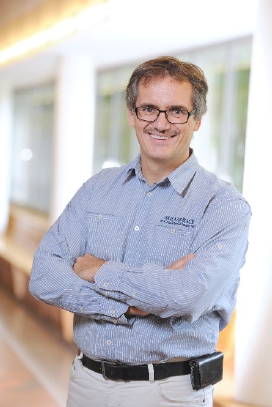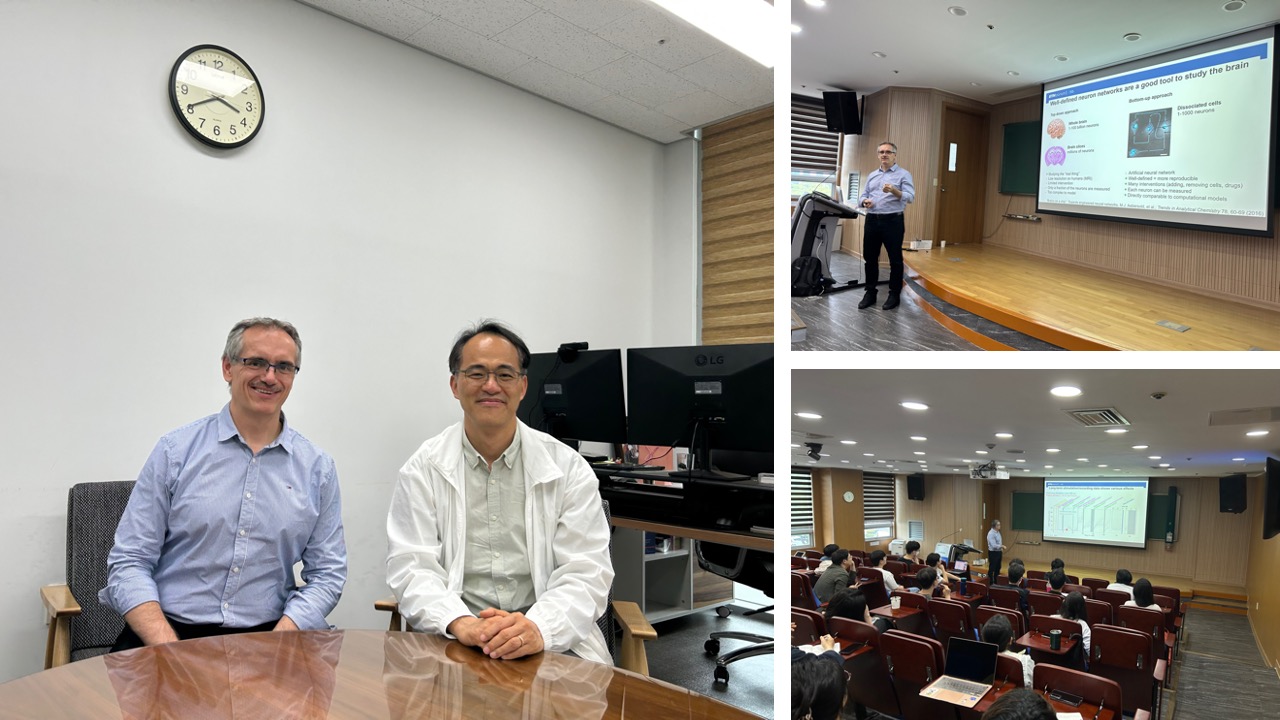bioeng_admin
2023-06-01 10:08:25
0
96


스위스 취리히 공과대학교 의공학연구소 야노스 보리스 교수님께서 학과에 방문하셔서, 세미나를 해주셨습니다. 이번 방문은 우리 학과 학과장 남윤기 교수 초청으로 이루어졌고, 최신 신경세포칩 (Brain-on-a-Chip) 기술에 대한 최신 연구내용을 공유해 주셨습니다. 세미나에는 우리 학과 뿐만 아니라, 생명과학과와 의과학대학원 교수 및 대학원생들로 참석하였습니다.
- 일시: 2023.05.18(목) 오후 4시
- 장소: 정문술 빌딩(E16) 2층 219호
- 연사: Janos Vörös (Institute for Biomedical Engineering, ETH Zurich)
- 주제: Neurons-on-a-chip – a bottom-up approach to neuroscience
- 문의: 바이오및뇌공학과 남윤기 교수 (ynam@kaist.ac.kr)
초록:
The traditional way of addressing questions related to the function of the brain involves studying the nervous
system of various organism with the argument: “nature optimized these through millions of years of evolution so
we should learn how they function by studying the real system”. However, this at the same time means to study
something that is highly complex and largely unknown.
Although the tools of neuroscience are becoming more and more advanced, due to the complexity of these
systems, it is very difficult to address fundamental questions. Probably this is the reason for the lack of
consensus in the field even on seemingly basic questions such as “what is information” and “how is information
stored and processed” in the brain. Besides this top-down approach there is also a substantial community
(including us) that follows the bottom-up approach, i.e. trying to learn from small networks of neurons with the
advantage that the position and connections of the neurons can be precisely defined and the cells have a good
accessibility for recording tools: such as patch clamp, microelectrode or CMOS arrays, or fluorescence
microscopy.
This talk will introduce new tools that we developed to create and to interact with well-defined neuronal networks.
For example, asymmetric PDMS microchannels can be used to guide the axonal growth in the desired direction
on top of microelectrode arrays3-6 while nanochannels enable the tuning of the connectivity between pre- and
postsynaptic neurons7. This allows studying fundamental neuroscience paradigms and enables the creation of
network architectures with real neurons, including human iPSC-derived cells6 towards personalized medicine.
Overall, the brain-on-a-chip and nerve-on-a-chip technologies presented in this talk are the first necessary step
for bottom-up neuroscience, a new approach to study neurons and their networks.






